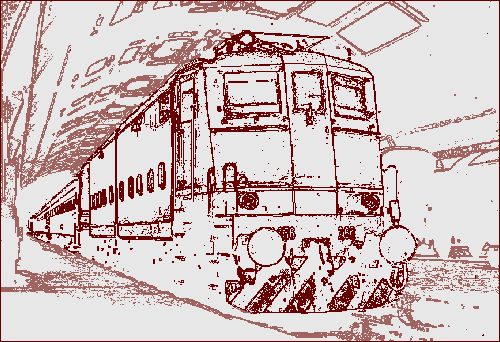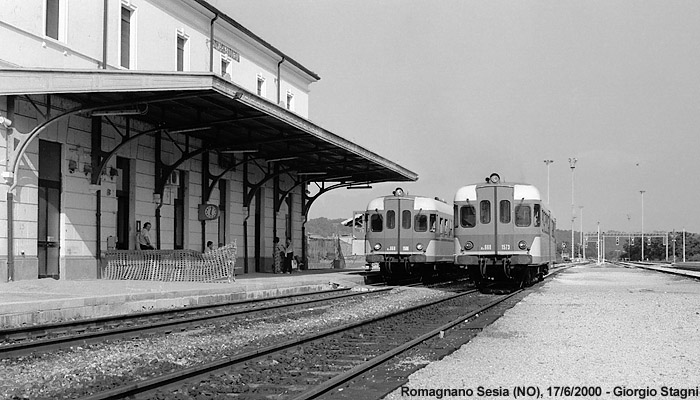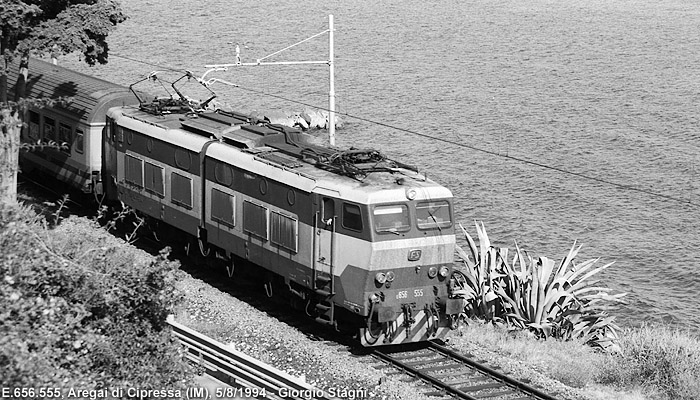Signs of a Railway
GIORGIO STAGNI SIGNS OF A RAILWAY
With contributions by Giovanni Demuru
July 2002. Web version June 2012. |
IntroductionOnce upon a time there was the railway, with its places, environment and atmosphere; in one word: its signs. Signs of a railway are therefore the workshop, where the just repainted loco appears; the depot, where engines rest side by side; the small and tidy station with its crossover track, where two railcars make their appointment; the great arches of Central Station in Milan, where every train seems ready for an official portrait; and furthermore: the historical routes of the 18th century, like the Giovi line, near Genoa, which was revolutionary when it was built; the presence of the track inside the city, along the San Remo promenade, or even in the tangled suburbs of a large city, where the railway finds its way to the countryside. Signs of the railway are the locos waiting to be pulled down, like the last threephase engines at the beginning of the 1980's, as well as the locos that have been travelling for half a century - the E.626, the E.636 - which still seem to bring the sign of their history into the present days. Signs are the Centoporte, possibly the most typical Italian coaches; the X Type, with their essential design; the wonderful Elettrotreni, like the Settebello, whose withdrawing, or even pulling down, is really a thing that cries out for vengeance. A sign is finally the steam traffic, which is considered in the last photos, with the special trains of the present days as well as with the very last regular services, in early 1980's. But the railway is even more! There probably does not exist another technological object that is so suitable to appear within a natural landscape; that is able to combine together technical requirements and human talent; that becomes a complementary element of the natural context in which it appears; that can interact very closely with urban planning, although it is not part of this discipline. That keeps all these features together. That's why whatever museum seems not to suit a locomotive: in a museum the locomotive has lost its world! Since mid Eighties, I've been a witness of the Italian railway and of its evolution. I followed its playing with nature, considering myself half as an explorer, half as a pilgrim; I photographed its signs in the different Italian landscapes, in some of them with more attention and affection. This gallery is a report of all this, brought into the essential lines of black & white photography. |
Black & White along the Seaside
Chapter 1 |
| After the Caprazoppa Tunnel, near Finale, the Riviera railway comes back to the seaside, still using the original single-track line built in 1872. A freight train made of luggage-cars is pulled by E.636.233 on 6 August 1992. |
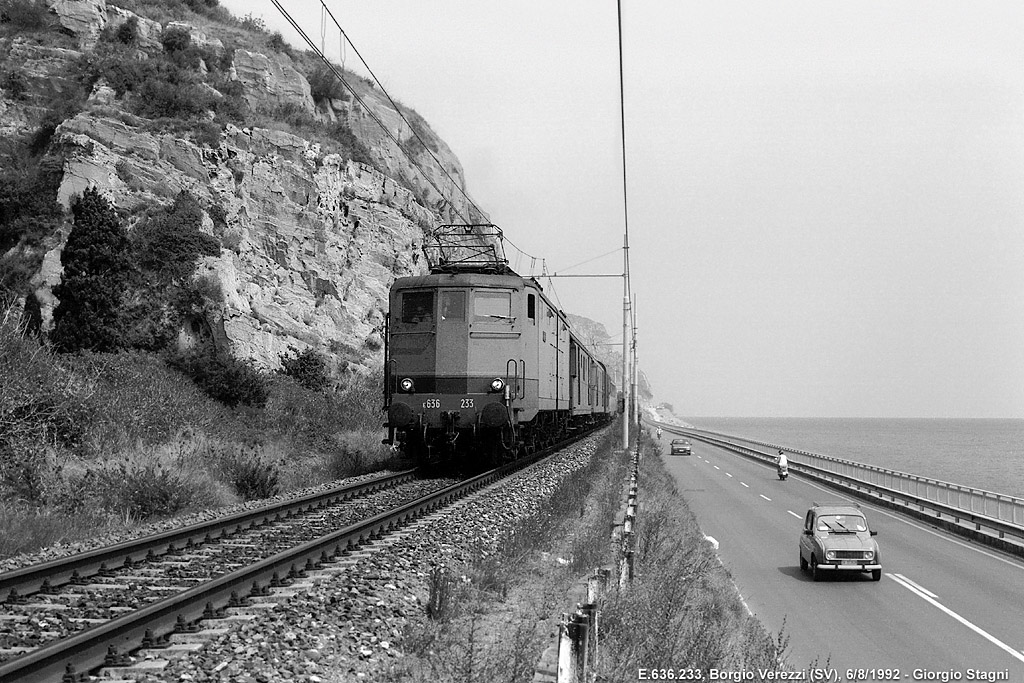
| During Summer 1992 the ALe 540 railcars built in the 50's were used for the evening local train Albenga - Ventimiglia. They are leaving from Albenga on 5 August 1992. |
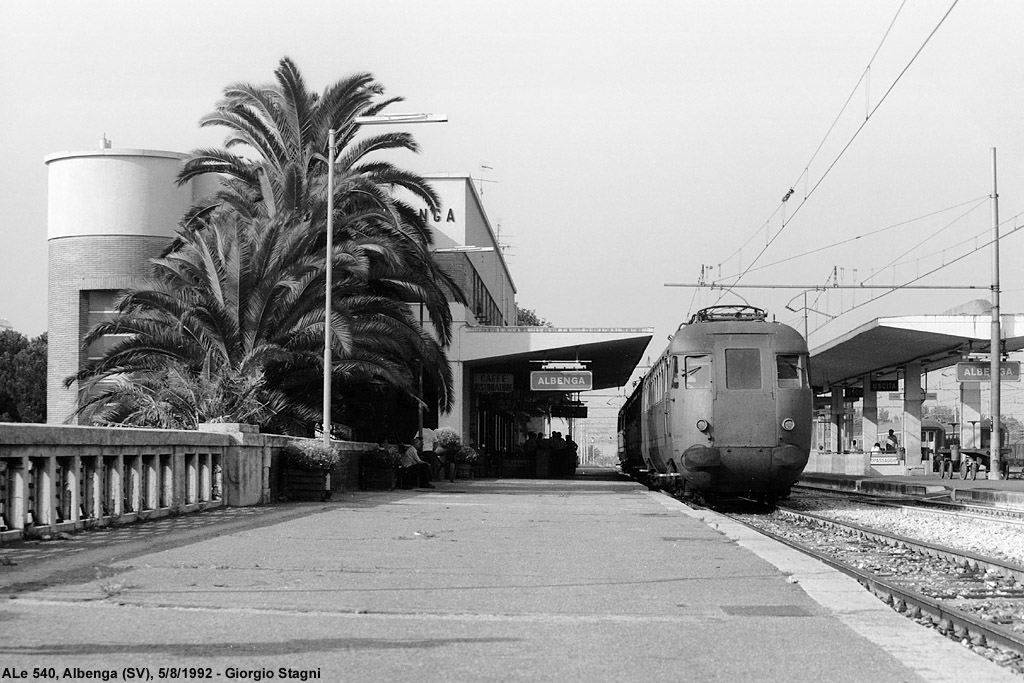
| The luggage-car train to Ventimiglia leaves the station of Laigueglia, next to the palms of Via Aurelia, on 30 July 1993. |
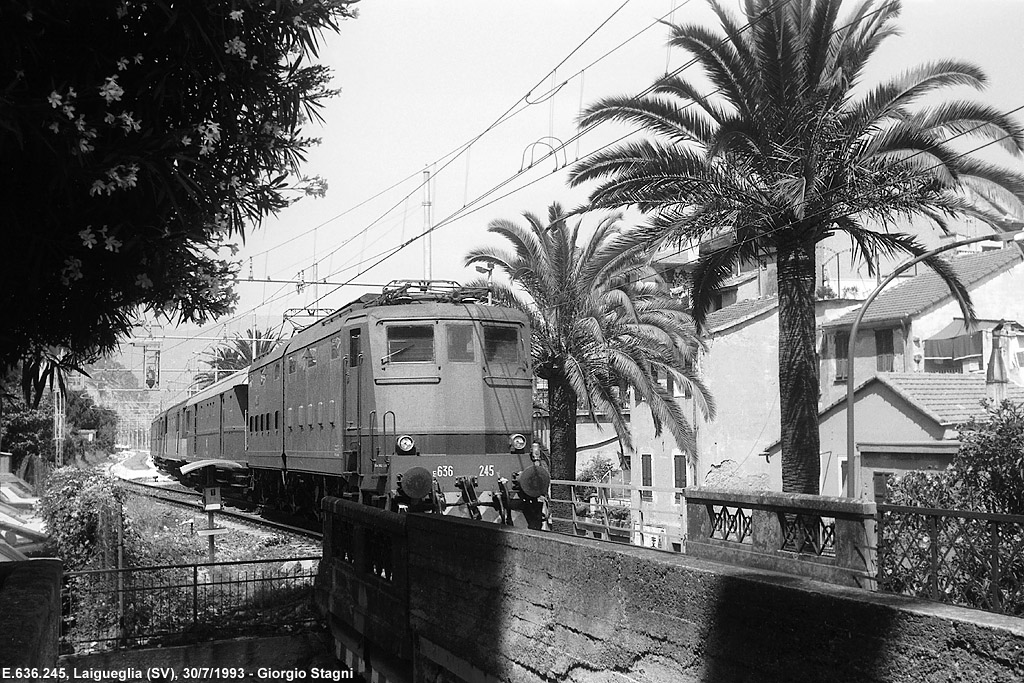
| The most famous seaside section of the Riviera Line is the one between Andora and Cervo. A direct train from Genoa is arriving in Cervo in Summer 1997. |
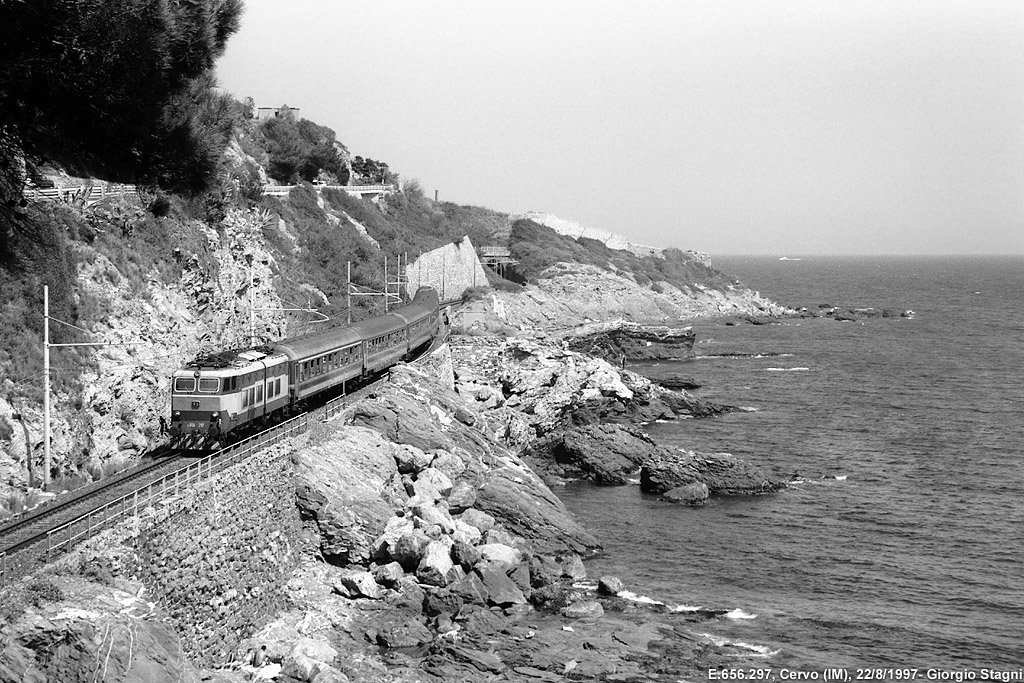
| Late evening crossing in the small station of Laigueglia: the train from Milan is pulled by an E.646. |

| In Laigueglia the railway lies very near to the ancient town; the train from Milan is pulled by an E.646 engine, instead of the usual E.656, on 3 August 1994. |
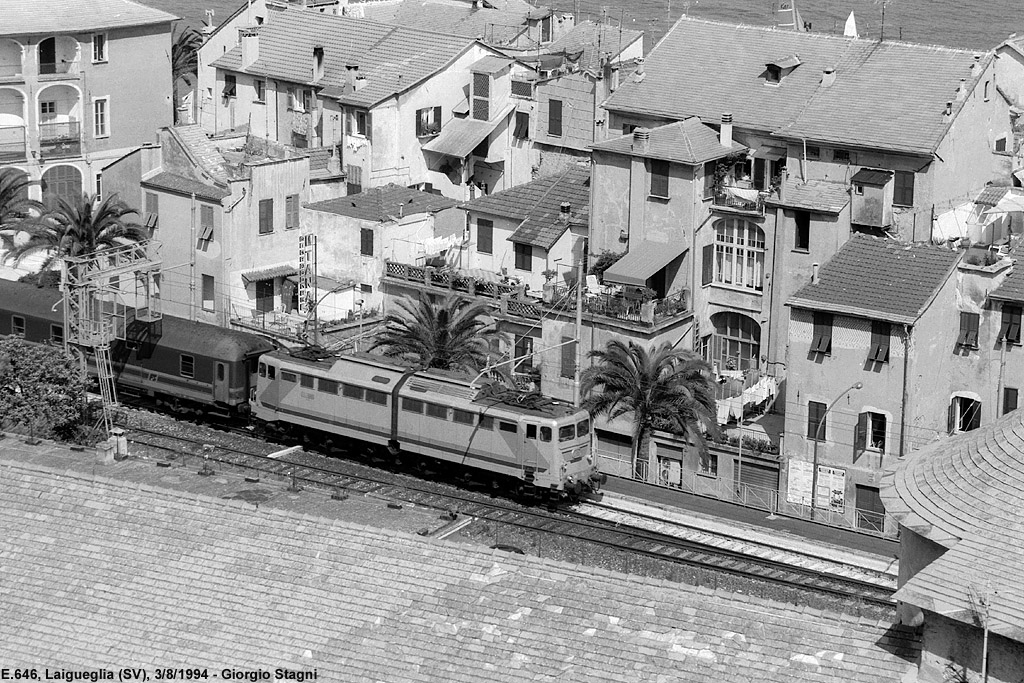
| The tele-lens emphasises the winding path of the tracks in San Lorenzo-Cipressa, on 28 August 1999. |

Foto 1-10/77 ^ Indice ^ Pag. successiva >>
[Index of Engines] [Indice della sezione / This Section] [Vai all'italiano]
